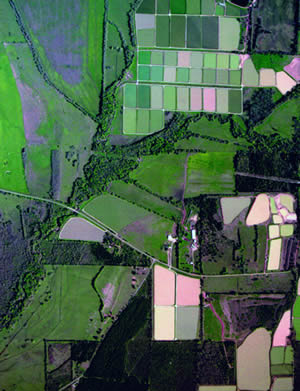The "Shell Center" North Auburn Fisheries Facilities Renamed for Long-time Leader

For four decades, Auburn University's Department of Fisheries and Allied Aquacultures has enjoyed world-class status, and much of the credit for the success is attributed to two visionary leaders: the late Homer S. Swingle and E. Wayne Shell.
These two early leaders grew a fledgling 1930s farm-pond fishing effort to an internationally recognized program of teaching, research and outreach in aquaculture, aquatic ecology and fisheries management.
In 1972, then-department head Swingle got his recognition when AU's fisheries building was named Swingle Hall in his honor.
Now, it's Shell's turn.
At its June meeting, the AU Board of Trustees approved a resolution renaming the 1,600-acre North Auburn Fisheries facilities the E.W. Shell Fisheries Center.
The center will be formally dedicated during a special ceremony to be held in the spring of 2007.
A Chapman, Ala., native, Shell earned his bachelor's and master's degrees in fisheries from AU in 1952 and 1954, respectively. After graduating with a Ph.D. from Cornell University in 1959, Shell joined the Auburn faculty and began to work closely with Swingle, who was head of the young fisheries program, to move the department to a level of international recognition.
When Shell took the reins as department head from Swingle in 1973, he recognized that field facilities with specialized laboratories and ponds would be needed to support a top-notch program. During the 21 years of his administration, Shell was instrumental in securing funding and building most of the labs and facilities at the North Auburn Fisheries campus, including:
- A fish hatchery and field classroom in 1977
- Fish nutrition and fish processing labs in 1978
- A fish market building for consumer research and teaching in 1985
- A fish disease laboratory and a building to house faculty and students in fisheries management and ecology in 1989
- A fish genetics lab, office building and greenhouse complex between 1990 and 1991
- 70 new ponds ranging in size from 0.05 acre to 10 acres and 13 rebuilt or renovated ponds between 1973 and 1994.
Expansion of the North Auburn campus allowed the department to serve its burgeoning graduate education program, but that's only the tip of the iceberg, current department head David Rouse says.
"In addition to being a hands-on teaching lab for our graduate and undergraduate students, these facilities are used as a research arena by faculty and students; as a teaching site for fish farmers, recreational pond owners, processors, marketers and citizen groups interested in protecting the environment; and as an educational component for public school students and scout and service groups throughout the region," Rouse says.
While the E.W. Shell Fisheries Center is the premier such facility in the world, at least 13 U.S. universities and government agencies have patterned facilities after it. Similar facilities can also be found in more than foreign 31 countries.
Shell Center to Feature New $5.6 Million Research Complex
The newly named E.W. Shell Fisheries Center in north Auburn will be home to a new $5.6 million Center for Aquatic Resource Management that will be built with federal funding U.S. Sen. Richard Shelby, R-Ala., was instrumental in securing.
David Rouse, head of the CoAg Department of Fisheries and Allied Aquacultures, says the new facility, which will house state-of-the-art fish research laboratories as well as offices and limited classroom space, likely will be constructed just north of the Shell Center's research ponds, where the AU Fish Market now sits. The new building will include a market area and visitors' center, Rouse says.
The AU Board of Trustees approved the project in September. Rouse says an architect should be selected before year's end, with construction expected to begin in early 2007 and be completed sometime in 2008.
"We are thrilled that this project, which has been in our long-range vision for some time, will finally become a reality," Rouse says. "The center, which will feature several large fish holding areas, environmentally controlled fish labs and analytical labs, will allow us to continue to produce top-notch research that will sustain the fisheries industry in Alabama and worldwide."
Funding for the project is coming through the U.S. Department of Commerce National Oceanic and Atmospheric Administration. Shelby, who is chairman of the Senate Appropriations Committee on Commerce, Justice and Science, announced the appropriation in mid-September.
